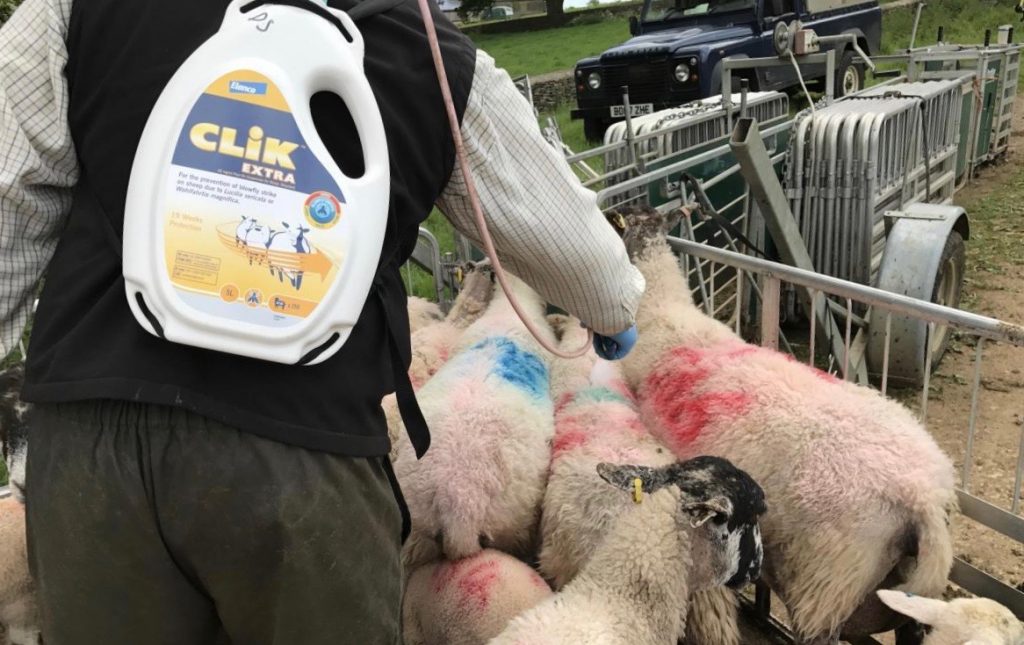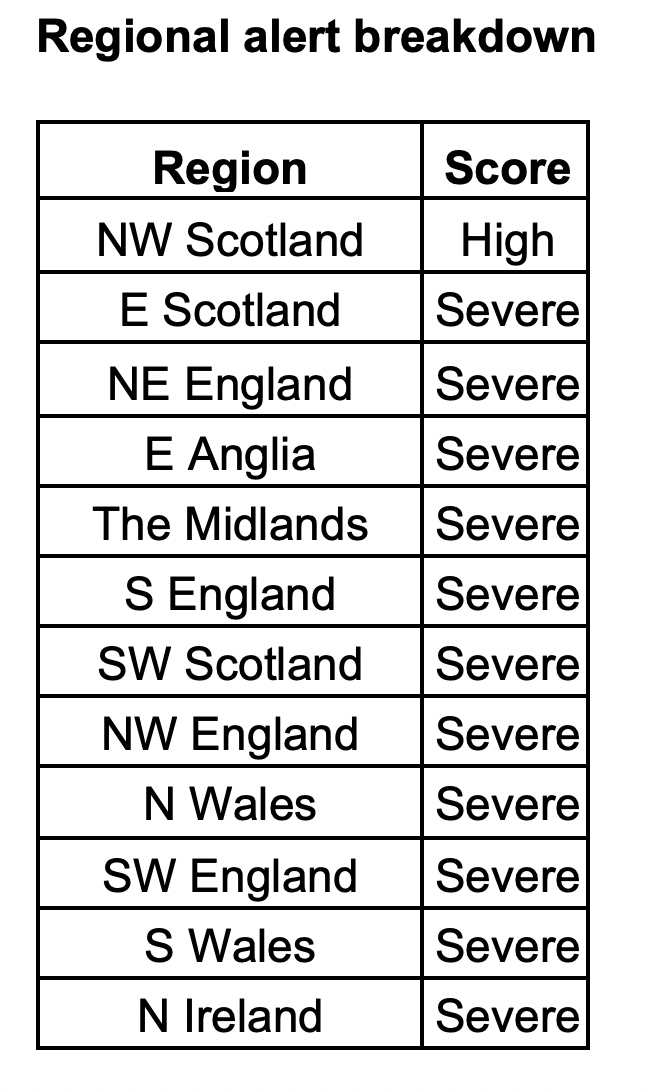Blowfly risk now at ‘severe’ across most of UK
17th August 2020
The latest blowfly update, produced by Elanco and Nadis, shows the risk level is now at ‘severe’ in all but one region of the country.

The latest blowfly update, produced by Elanco and Nadis, shows the risk level is now at ‘severe’ in all but one region of the country.
Severe risk is categorised as one in 100 animals may be struck, while high risk is one in 500 animals may be struck.

Richard Wall, professor of zoology (ectoparasite specialist) and compiler of the Blowfly Risk Alerts, says:
“Warm, humid weather is perfect for blowflies and increases the survival of any maggots on the sheep. This time of year is the peak of the strike season, the risk of strike is severe across most of the country.
“Fly populations are at their maximum, any lambs still on the farm are at high risk, and the risk for ewes is increasing as their fleece regrows. High levels of vigilance are therefore required even if animals have been treated against strike.”
Independent sheep veterinary consultant, Dr Fiona Lovatt, adds that we are “at the mercy of the weather” so it is best to apply a treatment that gives the best coverage now, as the costs of inaction far outweigh the cost of protection.
Elanco ruminant technical consultant says using protection early reduces risk later in the season by ensuring a much lower fly count as the season progresses.
“Blowfly strike is not an inevitable part of farming and can be mostly avoided with the right management strategy,” she explains.
“When farmers are looking at treatment options, they need to look for the longest protection with an IGR that binds to the fleece – it is now possible to get 19 weeks blowfly strike prevention. There are no guarantees when it comes to blowfly strike – with significant levels identified into November, an essential part of any strategy, has to ensure an early treatment that extends right through the long season.”
Results of an Elanco blowfly study conducted in partnership with the National Farm Research Unit found that 99 per cent of farmers having suffered financial losses as a result of blowfly strike. Meanwhile, 82 per cent agree that the blowfly season is getting longer, with cases of strike being reported as early as February and as late as November.
The consequences of blowfly strike can be devastating, leading to production losses and welfare problems. Blowfly treatment is estimated to cost 50p per animal, while financial losses from blowfly are estimated at £200 to breed a replacement ewe, £80 per lamb death, £10 production loss per lamb struck and £10 labour costs for handling struck animals.
For real-time reports from farmers on blowfly, visit: https://farmanimalhealth.co.uk/tracker
For continuous updates on blowfly risk based on Met Office data visit: https://alerts.nadis.org.uk/
